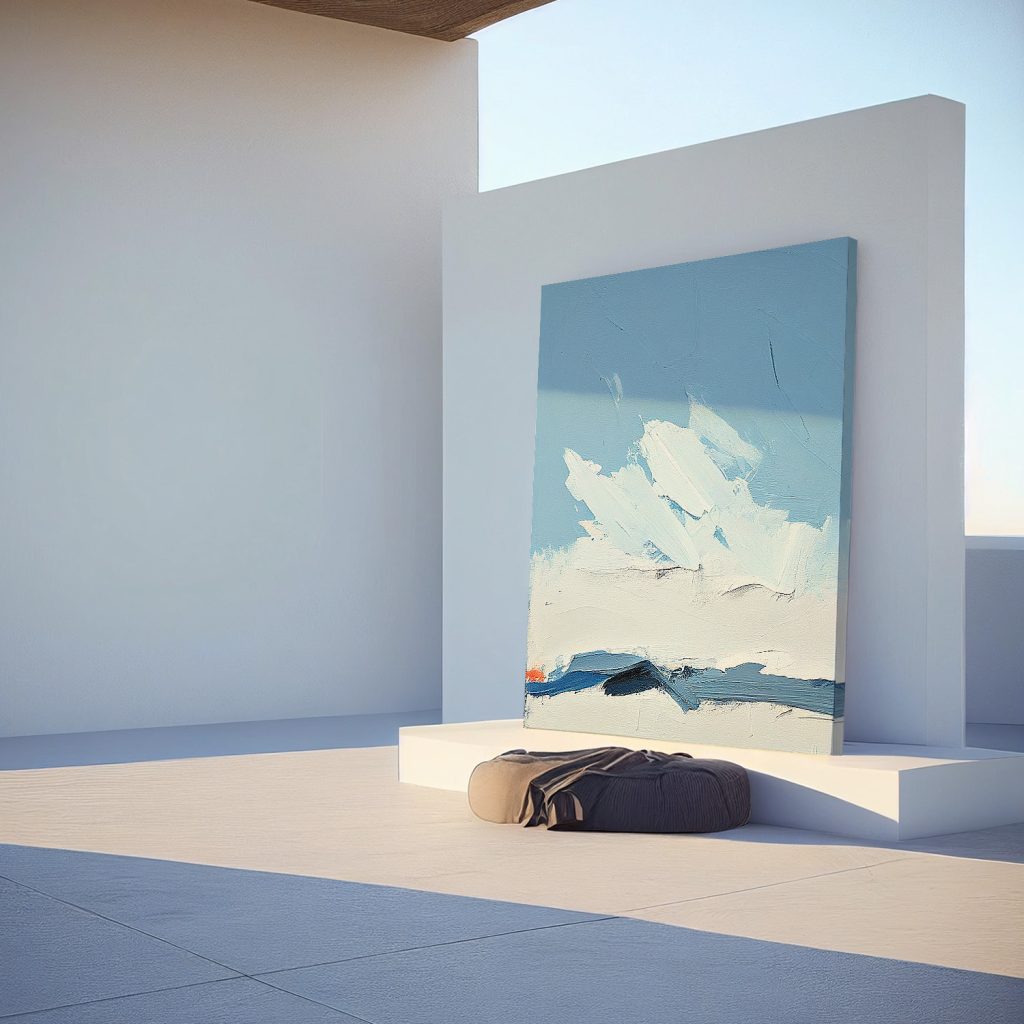Analysis of the Basic Concepts of Hand-drawn Oil Painting
First, the definition and characteristics of oil painting
Oil painting is a form of painting in which pigments are mixed with quick-drying vegetable oils (such as flaxseed oil, poppy oil, etc.) and created on canvas, wooden boards or thick cardboard. Its core features include:
Slow drying: The drying time of the pigment is relatively long (several days to several months), which is convenient for repeated modification and shaping of layers.
High color saturation: Oily media can enhance the coverage and luster of colors, making it suitable for presenting delicate color transitions.
Strong durability: The dried pigment layer forms a stable film, which is resistant to aging and not easy to fade.
Second, oil painting tools and materials
Paintbrush
Shapes: flat-tipped pen (suitable for large-scale coloring), round-tipped pen (for detailing), fan-shaped pen (for creating texture).
Material: Pig bristle brush (highly elastic, suitable for thick application), mink brush (soft, suitable for fine brushstrokes).
Pigment
Classification: Transparent colors (such as ultramarine, alizarin red), semi-transparent colors (such as earthy yellow, ripe brown), opaque colors (such as titanium dioxide, cadmium yellow).
Feature: Pigments of different transparencies can be superimposed to create rich color gradations.
Medium
Colored oil: Dilute pigments and extend drying time.
Turpentine: Cleans brushes or dilutes paint (dries quickly, but reduces color saturation).
Varnish: Apply after the work is completed to protect the picture and enhance its luster.
Canvas
Material: Linen (durable), cotton fabric (economical and practical).
Base material: A base material (such as acrylic base material or oil painting base material) should be applied to separate the pigment from the canvas fibers and prevent oil absorption.
Third, the basics of oil painting techniques
Thick coating method (Impasto
Features: Thick layers of pigment create distinct brushstrokes and a three-dimensional effect.
Application: It is often used to express texture (such as metal, rock) or emphasize the contrast of light and shadow.
Thin coating method (Glazing
Feature: Apply a thin layer of transparent color multiple times to create a deep color effect.
Tip: Wait until the bottom layer is completely dry before stacking to avoid color blurring.
Rubbing method (Sfumato)
Feature: Gently rub the picture with a soft cloth or your fingers to make the edges transition smoothly.
Representative work: The hazy outline of the figure in Leonardo Da Vinci’s Mona Lisa originated from this technique.
Scraper method
Tool: Oil painting scraper (flat-headed or serrated).
Effect: It can create rough textures or quickly cover large areas of color.
Fourth, the process of oil painting creation
Composition and drafting
Method: Outline the canvas with a pencil or thin ochre color.
Note: Avoid overly deep lines to prevent the subsequent pigment layers from being exposed.
Lay out large color blocks
Step: Start from the background or the main color block and quickly cover it with a large brush.
Principle: Start thin and then thick; start the whole and then the parts.
“Deeply shape”
Key points: Depict details (such as facial features and wrinkles on clothes), and adjust the color relationship.
Technique: Enhance the three-dimensional effect through the contrast of warm and cool tones and the gradation of light and shade.
Adjustment and Completion
Check: Step back to observe the picture, correct the proportion, color and overall atmosphere.
Protection: After drying, apply varnish and keep away from air and dust.
Fifth, suggestions for learning oil painting
Start with copying: Choose still life or landscape paintings with simple structures, and learn color matching and brushstroke application.
Master color theory: Understand the three primary colors, complementary colors and the relationship between warm and cool colors.
Emphasize basic training: Enhance modeling skills through sketching practice and then transition to oil painting.
Be patient: Oil paintings dry slowly. You need to wait for each layer of pigment to dry before continuing to create.
Through the study of the above basic concepts, beginners can gradually master the material properties and techniques of oil painting, laying a solid foundation for subsequent creations.
